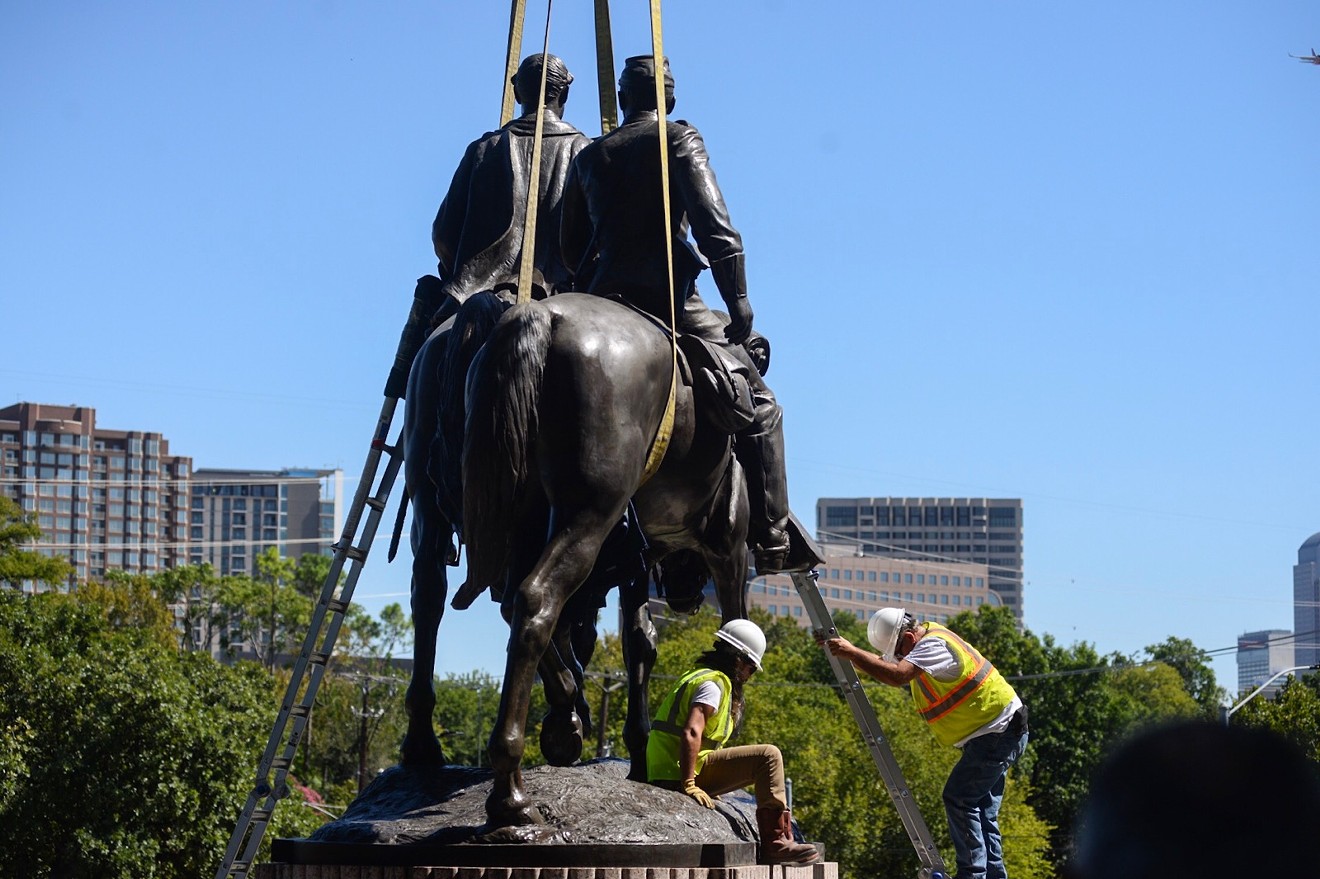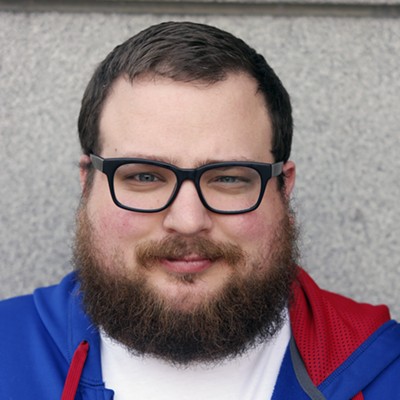Around noon, the vote came in. The council voted 13-1 to remove the statue. Crews began to measure the monument for dismantling, but word arrived late in the afternoon: U.S. District Judge Sydney Fitzwater signed a temporary restraining order, saving the statue for at least one day.
Amid this dramatic backdrop, activists on both sides and Dallas City Council members arrived in Oak Lawn to argue the issue.
"My husband is a history buff, and he couldn't make it," Karen Johnson said. "I drove in from Mansfield just in case."
Like many others at the park, Johnson didn't want Confederate statues removed, but she didn't have a huge problem with them being placed in a history museum, either. The only thing she was worried about, she said, was the potential for a slippery slope should the city decide to rename parks and streets named after Confederate figures.
"I would like it to stay because it's beautiful," she said.
Ginger Bellamy, a frequent visitor to Lee Park who has attended its annual pet parade, took issue with those who think the statue is worthwhile public art.
"Germany doesn't have a lot of Hitler statues. Adolf's not a popular name," she said. "Dallas is such a segregated city, and it's sitting here a neighborhood where Highland Parkies come to retire. To me, it's just a monument to white privilege."
Beth Biesel, a member of the leadership team of the Park Cities-Preston Hollow Leadership Forum, complained that those who'd signed up to speak to City Council were given only one minute each to express their opinions. She believes the plan to remove the statue was made before the vote.
"They brought us in, they give us one minute and it's a farce. It's a sham. It's a kangaroo court," Biesel said. "This won't stop. There's no unity in this. ... The City Council is not my moral leader. Their job is not to pronounce morality on people."
She said the debate is about more than just a statue.
"It's about destroying the United States Constitution and the United States as a country," she said. "There's a force that wants to destroy us, and they're just chipping away. You destroy the man sitting on that horse, and you destroy the ideas he contributed to the greater cause."
Council member Dwaine Caraway made a brief appearance at the statue before heading back to City Hall for Wednesday afternoon's City Council session. Removing the statue immediately is imperative, he said, to keep Dallas police safe by stopping further protests against such monuments.
"We do not need to revisit something that happened a year ago," Caraway said, "because there would be more rallies. More rallies means folks within our police department would be at risk. ... Now we can go and concentrate and let the task force do their work."
Shortly after the events in Charlottesville, Virginia, last month, Dallas Mayor Mike Rawlings and several members of the City Council proposed letting a task force take 90 days to decide what to do with Dallas' monuments to the Confederacy. At the behest of Caraway and several other council members, that plan morphed into the one voted on Wednesday, which charges the task force to make the same decisions but calls for the immediate removal of the Lee statue.
As workers mounted the statue and began the process of attaching it to the large crane parked on Turtle Creek Boulevard, Lajours Taylor said she was pleasantly surprised the council decided to act quickly to remove the statue."When I got word that the statue was coming down today, I knew that I needed to be a part of this history." – Dallas resident Lajours Taylor
tweet this
"When I got word that the statue was coming down today, I knew that I needed to be a part of this history," she said. "Dallas is my home. Dallas is a place that I take pride in — being a united place. It's not a place of deep division."
Taylor expected that the process would take as long as six months and couldn't believe that crews began working to remove the statue at about 1 p.m.
"I didn't imagine that they'd begin taking down the statue as soon as the vote came in," she said.
But just as the crew looked like it could begin hauling off the statue, it stopped working. Soon, word of Fitzwater's restraining order filtered through the mostly disappointed crowd, and onlookers slowly began to head home.
Fitzwater will hear a request from Hiram Patterson and members of the Texas Division of the Sons of Confederate Veterans for a longer restraining order at 1:30 Thursday afternoon. Patterson and his lawyer, Kirk Lyons, the chief legal council for the neo-Confederate-affiliated Southern Legal Resource Center, argue that the city is unconstitutionally abridging free speech by taking the statue. The city also violated open meetings laws by voting on the issue during a City Council briefing rather than an agenda meeting, the suit argues.














